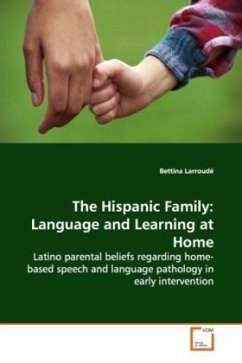The purpose of this study was to investigate Latino
parental perceptions regarding home-based speech and
language pathology, the influence of cultural beliefs
in child-rearing practices within the Latino
community in early intervention, and the relationship
that exists between cultural beliefs and home-based
speech and language pathology. Quantitative and
qualitative methods were used as part of the
collection process. A survey was created to
investigate child-rearing practices. The first part
of the survey contained information about the age,
years living in the United States, level of English
fluency, and level of education of forty-five
caregivers who agreed to be part of this study. The
second part of the survey consisted of twenty-two
statements about child-rearing practices.
Frequencies, descriptive
statistics and correlation coefficients were used to
analyze the data. Nine interviews and nine
observations were conducted with parents/caregivers
purposefully chosen from the pool of survey
respondents. A system of codes, patterns and themes
were created to analyze the qualitative data with
final propositions being
developed as part of the conclusive analysis.
parental perceptions regarding home-based speech and
language pathology, the influence of cultural beliefs
in child-rearing practices within the Latino
community in early intervention, and the relationship
that exists between cultural beliefs and home-based
speech and language pathology. Quantitative and
qualitative methods were used as part of the
collection process. A survey was created to
investigate child-rearing practices. The first part
of the survey contained information about the age,
years living in the United States, level of English
fluency, and level of education of forty-five
caregivers who agreed to be part of this study. The
second part of the survey consisted of twenty-two
statements about child-rearing practices.
Frequencies, descriptive
statistics and correlation coefficients were used to
analyze the data. Nine interviews and nine
observations were conducted with parents/caregivers
purposefully chosen from the pool of survey
respondents. A system of codes, patterns and themes
were created to analyze the qualitative data with
final propositions being
developed as part of the conclusive analysis.








